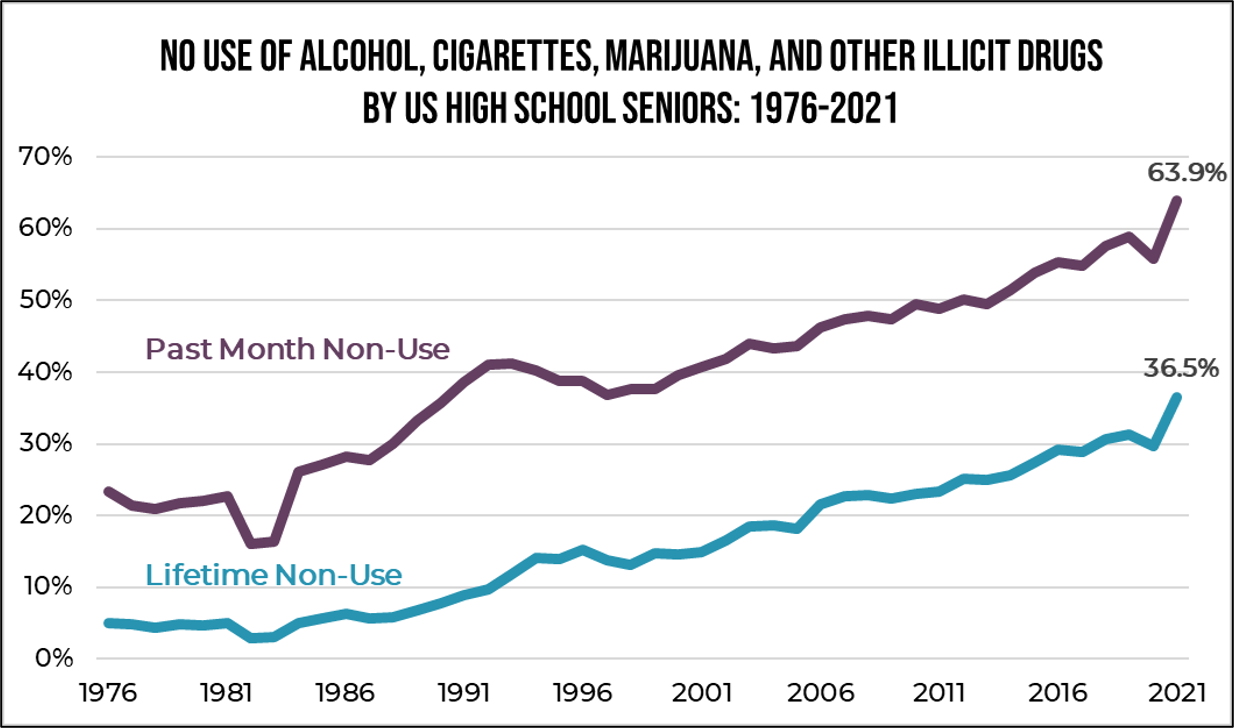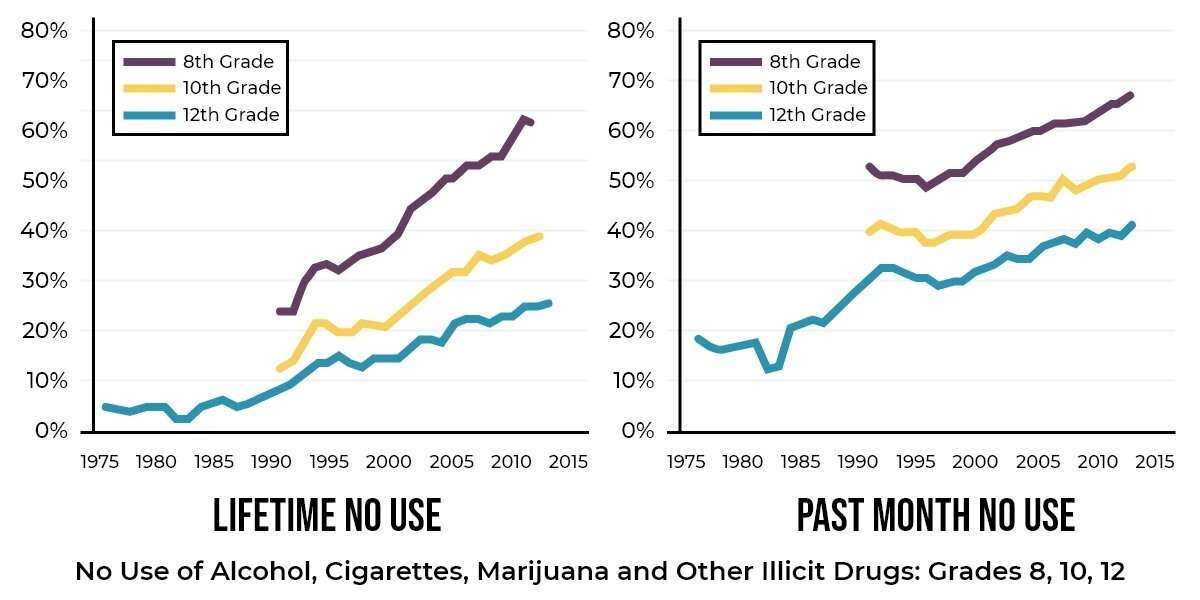One Choice: A Clear Public Health Standard For Youth
IBH launched One Choice Prevention, an online resource for substance use prevention professionals, community coalitions, student prevention groups and clubs, and anyone interested in having an impact on youth substance use. Rooted in the unique vulnerability of the developing adolescent brain, and informed by original analyses of nationally representative youth substance use data sets, IBH has reframed the goal of youth prevention as One Choice: no use of any alcohol, nicotine, marijuana, or other drugs for reasons of health.
With easy, though not legal, access to alcohol, marijuana, nicotine products, and other drugs, is it realistic to believe that young people will not use them?
An IBH study published in the peer-reviewed journal Pediatrics showed that from 1975-2014, in increasing and significant numbers, adolescents chose not to use any alcohol, cigarettes, marijuana, or other drugs. Most recently IBH published an updated study in Pediatrics showing this trend continued through 2018; importantly, the prevalence of vaping did not significantly change the overall rates of non-use because for youth, all substance use is related. Put another way, few teens use any one substance without also using others. IBH continues to track substance non-use using the nationally representative Monitoring the Future data.


It’s clear that youth substance use is not an inevitable. Nationally we’ve seen an increase from only 3 in 100 high school seniors refraining from any substance use in their lifetime to more than 3 in 10 making this choice. Past month non-use has increased from 16% in 1982 to nearly 64% in 2021.
In this video abstract Sharon Levy, MD, Director of the Adolescent Substance Use and Addiction Program at Boston Children's Hospital, discuss the latest study with IBH showing long-term trends in high school seniors who refrain from using any alcohol, cigarettes, marijuana or other drugs.
Another IBH study showed that there are three gateway drugs for youth: alcohol, nicotine and marijuana. Compared to their peers who did not use marijuana, youth aged 12-17 who used marijuana in the past month were:
7.9 times more likely to binge drink,
9.9 times more likely to use other illegal drugs, including opioids,
8.9 times more likely to smoke cigarettes.
The close association is also true for alcohol use: compared to their peers who did not use binge drink, youth aged 12-17 who engaged in binge drinking in the past month were:
9.9 times more likely to use marijuana,
8.1 times more likely to use other illegal drugs,
7.6 times more likely to smoke cigarettes.
Similarly, compared to their peers who did not use cigarettes, youth aged 12-17 who used cigarettes in the past month were
6.1 times more likely to binge drink,
7.7 times more likely to use other illegal drugs,
7.0 times more likely to use marijuana.
A study by Madras, et al., 2019 used NSDUH data and showed that when parents used marijuana, their children had increased risk of using marijuana too. An invited commentary on the study by IBH President Robert L. DuPont, MD and Vice President Caroline DuPont, MD notes that these findings underscore the need for engagement by both parents and health care professionals in youth substance use prevention and parental substance use disorder treatment.
For a number of years IBH studied the link between academic performance and the use of marijuana and other substances. This culminated in a published report in 2012, American’s Dropout Crises: The Unrecognized Connection to Adolescent Substance Use, coauthored by IBH President Robert L. DuPont, MD and Amelia Arria, PhD, Director of the Center for Young Adult Health and Development at the University of Maryland School of Public Health.
There is no constituency that supports the use by teens of alcohol, marijuana, nicotine, or other drugs. Because nearly all substance use disorders can be traced to adolescence, the continuing decline in youth drug use holds great promise for reducing all the later life problems resulting from use.
Robert L. DuPont, MD, President of the Institute for Behavior and Health and first Director of the National Institute on Drug Abuse speaks to parents about their important role in youth substance use prevention. Published by RyeTV (http://www.ryetv.org).
For more information about the One Choice youth can make about substance use and prevention resources from IBH visit www.OneChoicePrevention.org.






